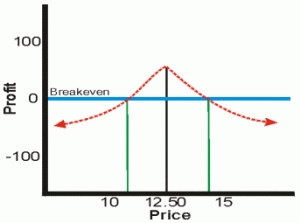A Diagonal spread is an options strategy established by simultaneously entering into a long and short position in two options of the same type i.e, two call options or two put options. It is also a strategy with different strike prices and expiration dates.
The diagonal spread is similar to the calendar spread, where near term options are sold while long term options are bought to take advantage of the rapid time decay in options that are soon to expire.
The diagonal spread is an option spread strategy that involves the simultaneous purchase and sale of equal number of options of the same class, same underlying security with different strike prices and different expiration months.
The main difference between the calendar spread and the diagonal spread lies in the near term outlook. The employer of the diagonal spread has a near term outlook that is slightly more bullish or bearish.
Diagonal Call Spread
If the option trader’s near term outlook is mildly bullish, he can implement a diagonal bull spread by writing higher strike near-month calls against lower strike far-month calls.
Diagonal Put Spread
If the option trader’s near term outlook is mildly bearish, he can employ a diagonal bear spread by writing lower strike near-month puts against higher strike far-month puts.
